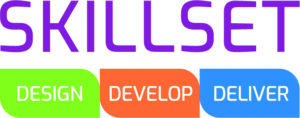Increasing Learner Engagement in e-Learning with Top Tips and Strategies
In today’s fast-paced world, eLearning has become an essential tool for organizations of all sizes, whether it’s for compliance training or introducing employees to new technologies. To ensure that eLearning is not only effective but also engaging, it’s crucial to design courses that engage and motivate learners. In this article, I’ve discussed five key strategies to increase learner engagement in your eLearning programs.
Key Strategies for Improving Student Engagement
1. Provide clear navigation throughout the course
Effective eLearning is based on a well-structured course format that guides learners through their learning journey. To support learners as they progress, your courses should include:
- Clear navigation instructions
Add indicators on each page that inform students of their current position within the course. For example, display progress such as “You have completed 4 of 12 lessons.” - Progress bars
Place a visual progress bar at the top of each page that shows how many lessons are left, for example '5 of 12'. - Activity Logs
Provide logs where students can view their completed tasks, see what the next step is, and assess their overall progress, for example, “You have completed 1/3 of all tasks in this course.”
These elements make the learning process transparent and ensure that students stay on track.
2. Integrate motion graphics and animated videos
Videos are a powerful tool to capture students’ attention and increase engagement. They stimulate both the visual and auditory senses, creating a richer learning experience compared to static content. By incorporating animated videos or motion graphics, you can:
- Demonstrate real-world applications
Videos can illustrate how concepts apply in real-world situations, creating a practical understanding of the material. - Simplifying complex information
Animated content can break down complex topics into easy-to-understand segments, making them more accessible.
For example, animation can be particularly useful for explaining complex technical processes or concepts. This approach helps the student to visualize and understand difficult topics more effectively.
3. Offer flexible learning opportunities
A one-size-fits-all approach to eLearning often fails to engage diverse learners. To address this, consider expanding your course offering with a range of optional modules. This could include:
- Additional skills courses
Offer courses on topics like Microsoft Office, presentation skills, or leadership that students can choose based on their interests. - Self-study
Give employees the opportunity to take these courses at their convenience. This can lead to greater engagement and motivation.
This flexibility not only encourages learners to take ownership of their educational journey, but also helps tailor the learning experience to an individual’s needs. Additionally, monitoring course enrollments and progress can help develop a skills matrix for future training initiatives.
4. Provide a sense of achievement
Recognizing and rewarding progress is key to keeping students motivated. Consider implementing the following:
- Feedback and scores
Provide constructive feedback and scores on assignments and tests so students can gain insight into their performance. - Certificates and badges
Provide certificates upon completion of the course and use badges to recognize specific achievements. Badges are versatile and can be used to mark different milestones within the course. - Experience points and rankings
Award experience points for completing tasks and use leaderboards to promote a sense of competition and achievement among students.
These rewards provide tangible evidence of progress and can increase student morale and enthusiasm for further learning opportunities.
5. Implement real-world exercises and simulations
Active learning through practical exercises significantly improves retention and understanding. Instead of relying on theoretical content alone, integrate:
- Simulations
Create interactive simulations that mimic real-world scenarios. Let students make decisions, experience outcomes, and receive feedback. - Practice opportunities
Give students the opportunity to experiment and learn from their mistakes in a controlled environment.
This approach helps students apply what they have learned in practice, making the training more relevant and memorable.
Conclusion
Increasing learner engagement in eLearning requires a thoughtful approach to course design and delivery. By ensuring clear navigation, integrating engaging multimedia, offering flexible learning options, recognizing achievement, and incorporating hands-on exercises, you can create a dynamic and effective learning experience. These strategies not only make eLearning more enjoyable, but also ensure that learners retain and apply their new knowledge effectively.
If you want to improve your eLearning programs and engage your learners more effectively, consider the following strategies to create a more impactful and enjoyable learning experience.

